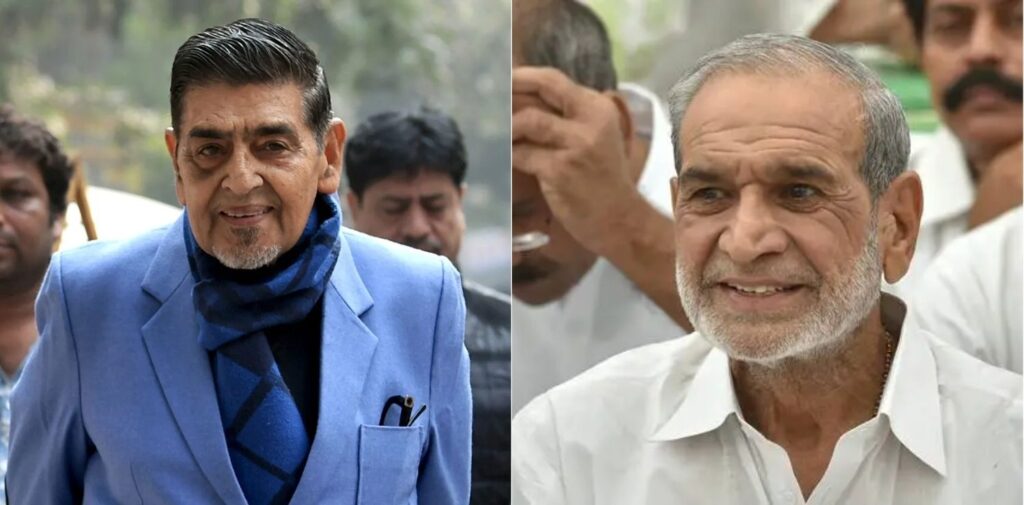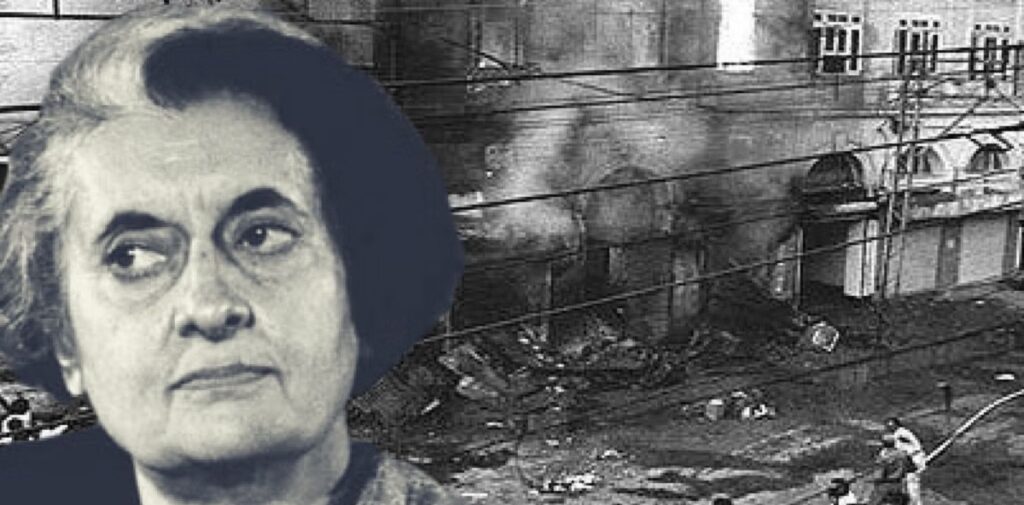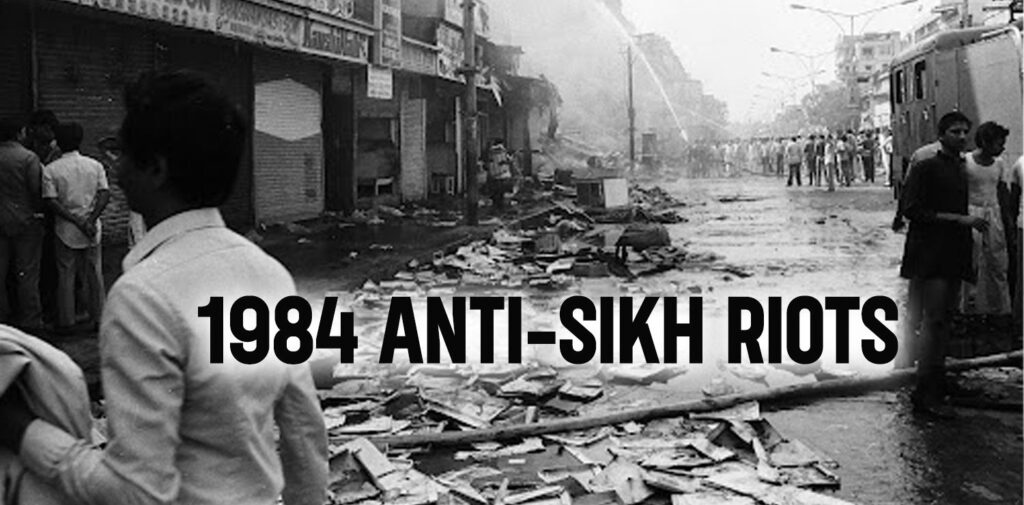The 1984 Anti-Sikh riots were a horrific chapter in India’s history. These riots erupted after the assassination of Prime Minister Indira Gandhi on October 31, 1984, by her Sikh bodyguards. In the days that followed, violence against Sikhs spread across India, particularly in Delhi, where mobs attacked Sikh homes, businesses, and gurdwaras (Sikh temples). Thousands of innocent Sikhs were killed, women were raped, and families were destroyed. The question that has lingered for decades is: Was the Congress party, which was in power at the time, responsible for the violence? Let’s look at the evidence that suggests Congress played a key role in these horrific events.
Role of Congress Leaders
When Indira Gandhi was assassinated, the whole nation was shocked and grief-stricken. But the events that followed are what makes the question of Congress’s responsibility so serious. Immediately after the assassination, violence broke out, and mobs targeted Sikhs. What is alarming is that many Congress leaders, both at the national and local levels, were involved in inciting and even organizing these attacks.
One of the most damning pieces of evidence comes from the testimony of several witnesses and survivors. Many of them have reported that Congress leaders were seen leading the mobs and encouraging them to kill Sikhs. For instance, prominent Congress leaders like Jagdish Tytler, Sajjan Kumar, and others were accused of either directly leading the attacks or making inflammatory speeches that fueled the violence. Some eyewitnesses have testified that these leaders even provided lists of Sikh-owned businesses and homes to the mobs, directing them to destroy them.

The Lack of Police Action
Another major factor that points to Congress’s responsibility is the role of the police. While mobs were attacking innocent Sikhs, the police seemed to be either absent or actively supporting the violence. In many cases, the police did nothing to stop the attackers. There are many reports of police officers standing by while the mobs killed, looted, and destroyed property. Some eyewitnesses even claimed that the police were seen actively participating in the violence, arresting Sikhs but not the mobsters who were committing the crimes.
The failure of the police to protect the Sikh community and stop the violence raises serious questions about the role of the government, which was led by the Congress party. The fact that the police were either complicit or inactive suggests that Congress leaders either condoned or turned a blind eye to the violence, allowing it to continue unchecked.
The Political Context
To understand why Congress might have been responsible for the riots, it is essential to consider the political context of the time. Indira Gandhi’s assassination came after years of tension between the Sikh community and the Indian government. There had been ongoing demands from some Sikh groups for greater autonomy, especially in Punjab. The situation worsened during Operation Blue Star in June 1984, when the Indian Army stormed the Golden Temple, the holiest site for Sikhs, to remove armed militants led by Jarnail Singh Bhindranwale. This operation caused immense anger among Sikhs worldwide, as many innocent people were killed in the process.
After Indira Gandhi’s assassination, the Congress party, in its grief and anger, blamed the entire Sikh community for the actions of a few individuals. The response from Congress leaders, rather than being one of calm and restraint, was to incite anger against the Sikh community, viewing them as collective perpetrators of the crime. This created an atmosphere of fear and hatred that the mobs exploited to carry out the attacks.
The Organized Nature of the Violence
The anti-Sikh violence was not a random outburst of anger. It was highly organized and well-coordinated. Many of the attacks were carefully planned, with specific neighbourhoods being targeted. Sikh homes were identified and marked, and the attackers knew exactly where to go. The fact that the violence was so systematic suggests that it was not just a spontaneous reaction to Indira Gandhi’s assassination but a well-orchestrated effort, possibly with the knowledge or approval of political leaders in the Congress party.
The mobs were not just attacking Sikhs out of revenge for the assassination. They were also looting and destroying Sikh property, which suggests a deeper political motive. It is possible that the violence was used to divert attention from the failure of the Indian government to control the situation in Punjab, or even to suppress the growing demands for Sikh autonomy. By targeting Sikhs, Congress leaders may have been trying to consolidate their political power and maintain control over the situation.

The Role of Media
The media also played a significant role in spreading misinformation and inciting violence. At the time of the riots, several media outlets, some of which were sympathetic to the Congress party, failed to report the truth about the violence. Instead of condemning the mobs, some media outlets even portrayed the attacks as a natural and justified reaction to Indira Gandhi’s assassination. The media coverage helped to fuel the violence, making it easier for the Congress leadership to downplay the seriousness of the situation and avoid responsibility.
In some cases, Congress leaders even appeared on TV making inflammatory statements that fueled the violence. For example, some leaders were reported to have made remarks like, “When a tree falls, the earth shakes.” Such statements were interpreted by many as incitement to violence against Sikhs, turning their grief and anger into a weapon.
Lack of Accountability and Justice
Despite the large-scale violence and destruction, very few of those responsible for the riots were held accountable. Even though numerous survivors and witnesses identified Congress leaders as the instigators of the violence, no serious action was taken against them. Over the years, many victims and their families have pointed out the lack of political will to bring the culprits to justice. Many of the accused Congress leaders continued to hold prominent positions in the party for many years.
This lack of accountability and the failure to deliver justice only deepened the sense that the Congress party was responsible for the violence. If the Congress leadership had genuinely been interested in stopping the riots and holding the perpetrators accountable, it would have ensured that strict action was taken against those responsible. However, the delay in justice and the impunity enjoyed by the accused leaders suggest that the party was more interested in covering up the violence than in seeking justice for the victims.

Conclusion: 1984 Anti-Sikh Riots
The 1984 Anti-Sikh riots were a tragic event that left a lasting scar on India’s history. The evidence points to the fact that Congress party leaders played a significant role in inciting and organizing the violence. From the involvement of Congress leaders in leading the mobs to the failure of the police to intervene, the riots were not a simple outbreak of anger but a carefully planned and coordinated attack. The political climate of the time, fueled by resentment after the assassination of Indira Gandhi, and the lack of accountability for the perpetrators, further suggested that Congress was responsible for the violence.
While the wounds of the 1984 riots are still fresh in the memories of many Sikhs, the struggle for justice continues. Until those responsible are held accountable, the question of Congress’s role in the violence will remain an open chapter in Indian history. The truth must come to light and justice must be served for the victims of these horrific attacks.




